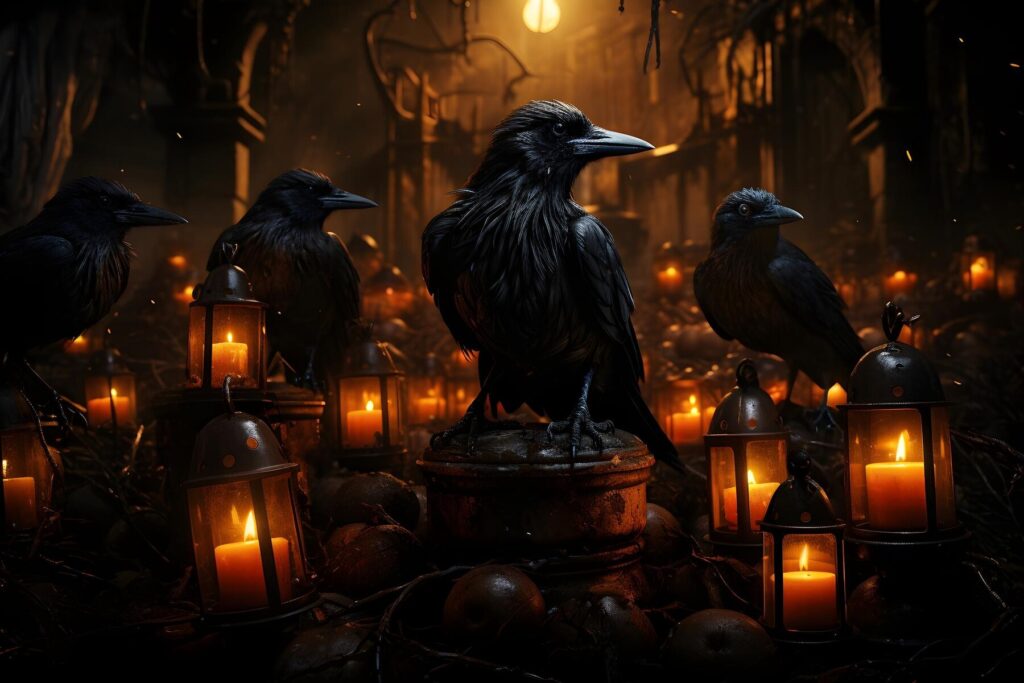Witches have been a part of folklore and mythology for centuries, with various cultures having their own interpretations and beliefs about these mystical beings.
In the Arthurian legends, witches are often associated with magic, prophecy, and mysticism. While they may not feature as prominently as knights or kings, they play significant roles in shaping the events in the Arthurian tales.
- Morgan Le Fay
Perhaps the most famous witch in Arthurian legend is Morgan le Fay, who is depicted as King Arthur’s half-sister and a powerful sorceress. She is often portrayed as a complex character with ambiguous motives, sometimes acting as an antagonist and other times as an ally to Arthur. Morgan is skilled in the magical arts and is known for her ability to shape-shift, cast spells, and brew potions.
She plays a central role in many Arthurian tales, including her involvement in Arthur’s conception, her role as an adversary in some versions of the stories, and her eventual demise. - Nimue
Nimue, also known as the Lady of the Lake, is another prominent magical figure in Arthurian legend. She is often depicted as a powerful enchantress who plays a pivotal role in the life of Merlin, the legendary wizard and advisor to King Arthur. In some versions of the tales, Nimue is responsible for Merlin’s downfall, using her magic to imprison him or seal him away in a cave or tree. Despite this, she is sometimes portrayed as a benevolent figure who aids Arthur and his knights. - Other Witches and Sorcerers
In addition to Morgan le Fay and Nimue, various other witches and sorcerers appear throughout Arthurian legend. These include characters such as the sorceress known as the Damsel of the Lake, who helps Arthur retrieve Excalibur from the Lady of the Lake, and the evil enchantress known as the Witch-Queen of Orkney, who is often depicted as an adversary to Arthur and his knights. - Magic Objects and Artifacts
Witches and sorcerers are often associated with magic objects and artifacts in Arthurian lore. For example, the sword Excalibur and its scabbard, which Arthur receives from the Lady of the Lake, is said to possess magical properties. Other magical items include Merlin’s enchanted staff or wand, which he uses to perform feats of magic and sorcery.

About Witches
Magic and Spells
Witches are often depicted as individuals who possess magical abilities and knowledge of spells and potions. They may use their powers for good or evil purposes, depending on the specific portrayal. In many depictions, witches are shown brewing potions in cauldrons, often in dark and secluded places like forests or caves. These potions may have transformative or magical properties.
Broomsticks and Flying
The image of a witch riding a broomstick through the night sky is a popular motif in folklore and literature. This association with flying on broomsticks may have originated from pagan rituals or hallucinogenic experiences.

Familiars
Witches are sometimes said to have animal companions known as familiars, which assist them in their magical practices. These familiars can take various forms, such as cats, owls, or toads.
Stereotypical Appearance
Witches are often depicted as old, haggard women with pointed hats, long noses, and warts. However, modern interpretations may deviate from these stereotypes, portraying witches as more diverse in appearance and age.
Percecution and Trials
Throughout history, witches have been subjected to persecution and witch hunts, particularly during the Early Modern period in Europe. Thousands of individuals, mostly women, were accused of witchcraft and subjected to trials, torture, and execution.
Cultural Variations
Different cultures have their own traditions and beliefs surrounding witches. For example, in European folklore, witches are often associated with Halloween and supernatural creatures like vampires and werewolves. In African and Caribbean cultures, practitioners of folk magic may be called witches or shamans and play important roles in spiritual and healing practices.
Modern Interpretations
In contemporary culture, witches are often depicted in literature, film, and television in a wide range of ways, from the wicked witches of fairy tales to more sympathetic and empowered portrayals. Modern witchcraft movements, such as Wicca and neo-paganism, also explore witchcraft as a spiritual practice focused on nature worship and personal empowerment.
